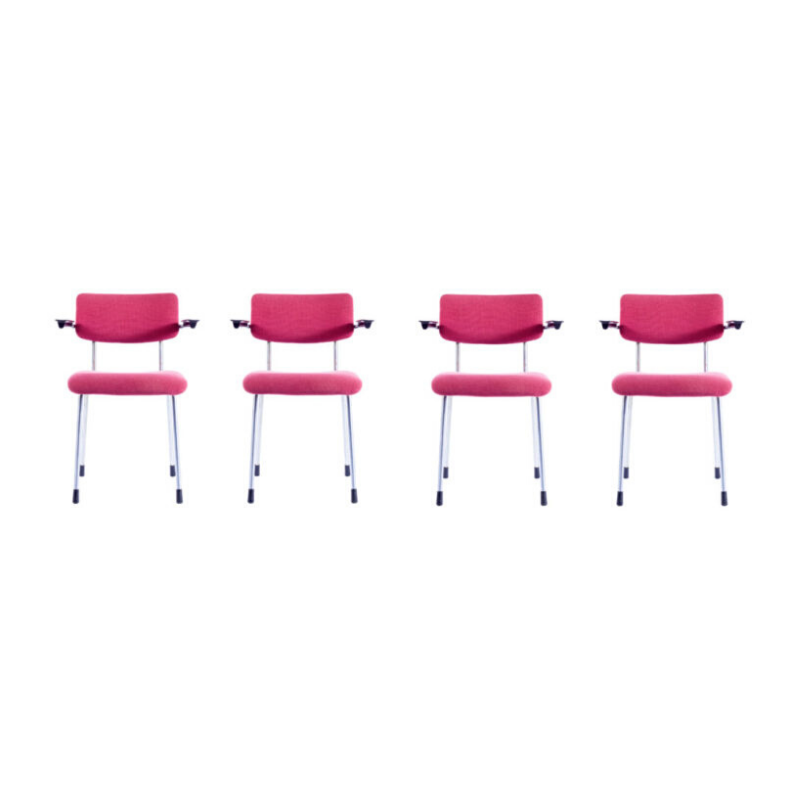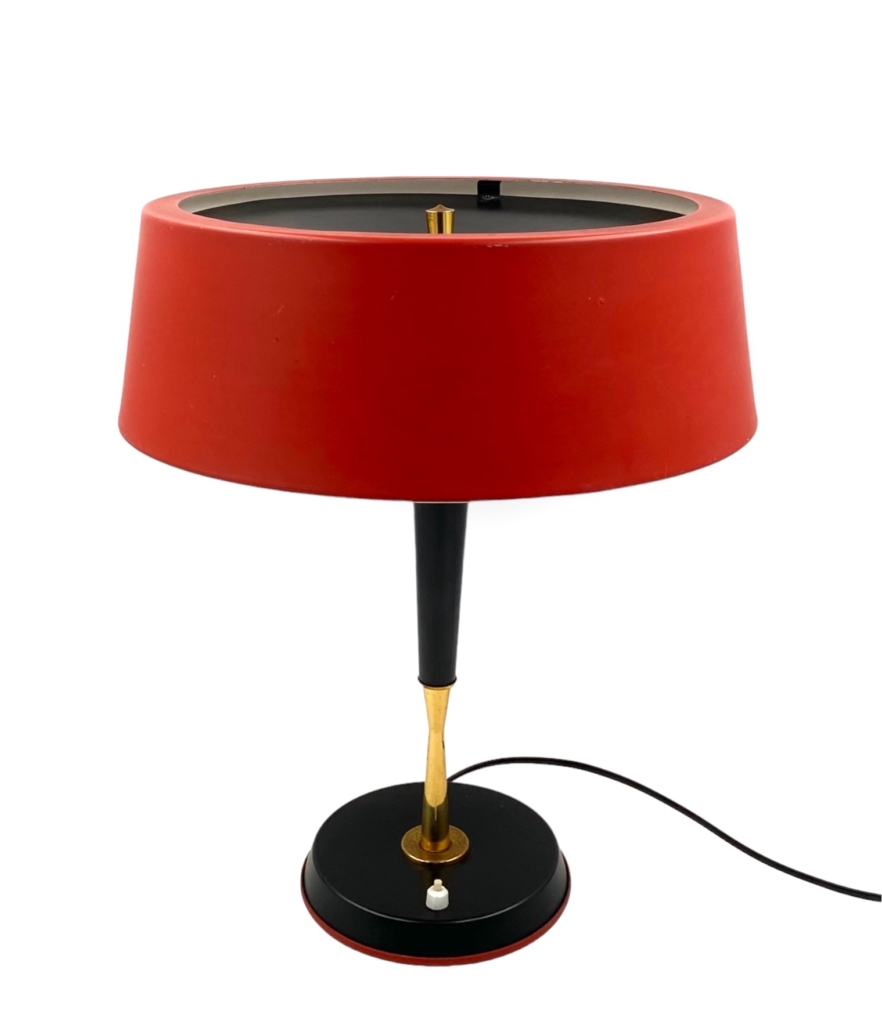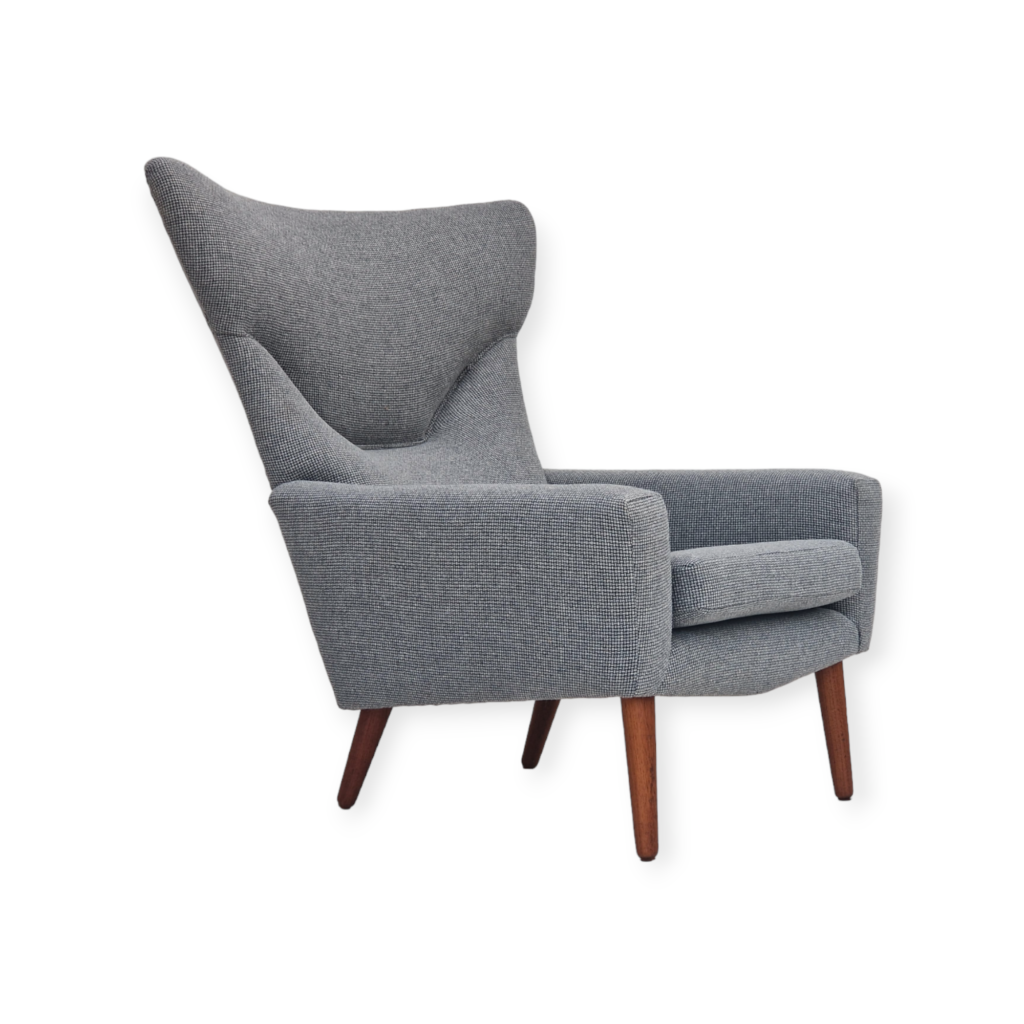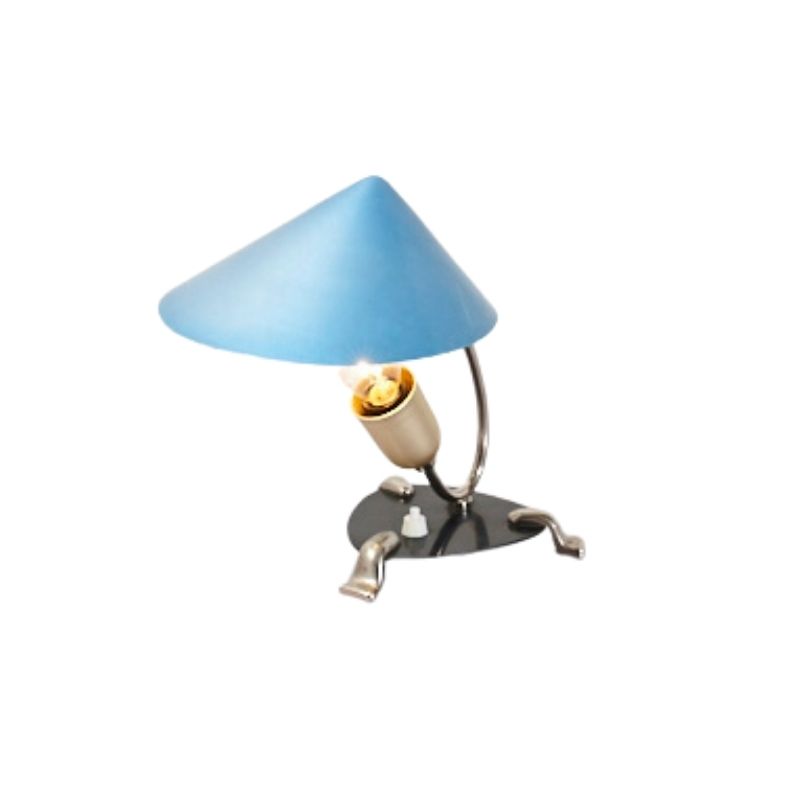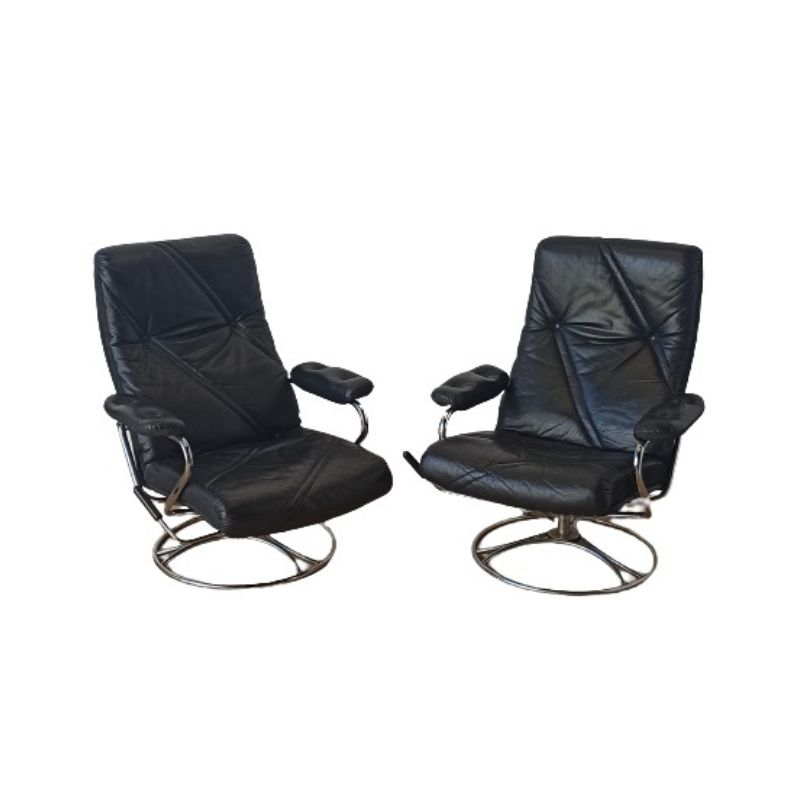Hello, I obtained a Paul Evans LCW and have taken it apart to get it looking better, when I did this I found the back oval shock mount to be different to anything I had seen before (as i own other HM 50's LCWs).At first I thought it was a hack job by someone but on closer inspection it is not. These screws were put in there originally. There is a washer on the outside of the shock mount where it is visible on the wood and there is a washer on the inside where you cant see it.Every screw is on a precise angle going through the shock mount and into the wood back. Any thoughts please help. Thank you.

Evans, the original producer of the LCW before Herman Miller did production. (Sorry, too much Paul Evans on the brain I am afraid, can't edit that out - I have been doing a restoration on one).
There is glue/epoxy used on the shock mounts to adhere them, as with all LCWs. The shock mounts have shrunk a little since the 40's. These are precision screws, 6 on each of the two areas around the holes. They are all on an angle I would say of about 15-20 degrees - they are all on the exact same precise angle. A machine did these screws a long time ago. It is not a "fix it up" job.
I thought the same thing until I got into the nuts and bolts of it.
These screws form part of the shock mounts original design. The material of the black shock mount had these screws in the mold before being poured - the black material has formed around the screws as opposed to being drilled out.
But it looks to me like the screws are at various angles. Some look pretty much pependicular to the surface of the shock mount but some are angled. Of those that are angled, the one at 2 o'clock in the photo looks to be angled toward the top of the the frame of the photo, and the one at 7 o'clock looks angled toward the 2 o'clock screw.
Welcome back, btw.
You are seeing photo distortion - and remember, as the rubber slowly shrunk over the years there has been movement - the shock mounts are smaller than it was originally.
They are about 10 degrees off center in both directions - i.e. they pivot not only from Left to right, but top to bottom. almost like a daisey configuration. Could that rubber have moved slowly over the years over parts of the screw? I guess that is a possibility also.
Here is another picture showing the oddity.
Thanks for the welcome back, too.
Our furniture colleciton is all said and done and we have been working on Modernist jewelry, glass and ceramics now for over a year.
We've been busy and to be frank, haven't had much we couldn't nut out by our own research, but I need some help on this as the more I look at it, the more my head aches.
I want to keep it and swap it out with an Eames LCW we have that is not walnut (this one is walnut, I think). So it doesn't matter if I don't figure it out as it will be just sitting there at home - but the mystery is going to bother me everytime I walk past it - I just know it, so I'm putting it out there to get help.
Whatever or however they got there was not part of any long term production so I doubt any particular machine was established to do it. I've seen earlier LCWs with quite a number of quirky ideas on how to make the shock mounts stick - the number out there is surprising as it shows the development of an idea, I have seen quite a few indeed. Even when it got to HM they rolled out several ideas which never went into production, but were done by the staff at the factory.
I saw a jig the other day tha hasn't been published or known off made by Harry Bertoia (the accopanying Jig to the one the Knoll museum has - they have "half" of it), its amazing the ideas that get thrown around when trying something out.
This LCW also has stamped into the wood (imprinted by hammer blows) 123 or 128 under the seat, not sure what that could or was meant to indicate.
It's nice having a mystery to write about on our blog.
Its actually a very secure way to attach the shockmount with several draw backs being time intensive and screw depth needing to me precise - possibly this is why they are at a slight angle though it would only add a little more screw penetration. The othe problem with it is that the pressure from the screws forcing the backrest to the seat causes it to "push" the screw deeper and around so original flexibility of the rubber would cause problems. Also, after a few decades the shrinking of the shockmount caused the screws to commence pushing through the otherside.
I'm going to let this thread stick on here a while and see if anyone can shed light on it - apart from the idea of the screws being done later on as that has clearly been on the table from the onset and I would accept that quickly if there were not indicators that they date back to the time of production.
I'm interested in anyone else who has seen other variations in early production that could give clues. Photos would be great too because I can summize them all in the blog spot and would be of interest to Eames fans.
No rush. Let's see what information might be out there.
By the looks of how stripped those philips screws are, it appears your chair has been tampered with many,many times over the years.
The easiest explanation also happens to be the most obvious in this case. The chair was either repaired or premptively prepared to prevent the shock mount breaking.
These chairs as with most Eames pieces were poorly designed. The shock mounts being the most famous example of this. Most people who owned them in the 50's and 60's were aware that the shock mounts were a defect and expected them to break at some point. I have seen plenty of creative repairs on these chairs over the years, some of them more thought out and clever than the original Eames design.
That said, you will likely ignore all of this anyways, as it appears you have already made up your mind (as most dealers do) that your chair is infact a super rare prototype worth thousands of dollars, atleast thats what the ebay listing will likely claim.
Probably is a repair. Good to see the viewpoints coming in on it.
We may be dealers but I did say this isn't a resale item - a curiosity item, just restained and sealed the walnut and it looks lovely as can be, rich and bold, now its a perfect match for our shelving.
I have to laugh at the prototype remark as I have lost count of how many prototypes of LCWs have come and gone at auction houses, on ebay and 1stdibs. It seems there must be 100's - and all in amazing museum quality conditon with shiny new labels! How anybody can beleive an LCW can remain unused since 1946 is amusing. Yes, Evans and HM just loved slapping labels on prototypes just in case someone confused them with the production lines and sent them out! Apparently Eames LCWs were sold with magic invisible coats to keep them free of anything.
I'm not short of stock and have plenty on hand to not worry about an Eames LCW - I was already sanding it down and refinishing it before I did this thread - really, who honesty cares that much about an LCW? When I started out collecitng I did, but really, who cares? There is a ton of better made chairs and designers from the era - but as a sculptural element it is very nice, but as for use, forget it - there are better out there, thats why I am swapping it out with the one I have.
If I was to go with Low chairs I m-i-g-h-t opt for the Eames black LCMs (I have a couple of those in storage somewhere), as they just seem to be more comfortable and sleek in black & chrome (contrast is striking). Perhaps when I don't have neighbors that weigh 400 pounds i will bring them out and use them some day.
Can't stand items in my own home that are not up to looking good, to hell with "original condition" mumbojumbo, I used to, and then realized that it is bunch of hog wash when it comes to funiture. Art and other objects it is my opinion that original condition stands for something and has greater importance (I.e. chips to cermaics, pottery & glass, paint touch ups on art works etc. etc.)
But wood? Really? Heaven forbid someone uses a little tung oil with stain in it - oh the horror, oh the horror! nothing looks nicer than 60 year old varnish, everyone knows that.
If you need any help, please contact us at – info@designaddict.com




